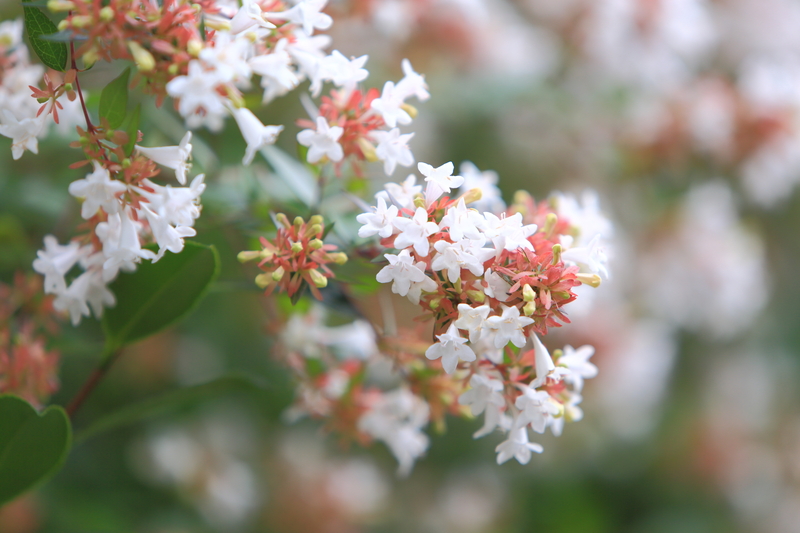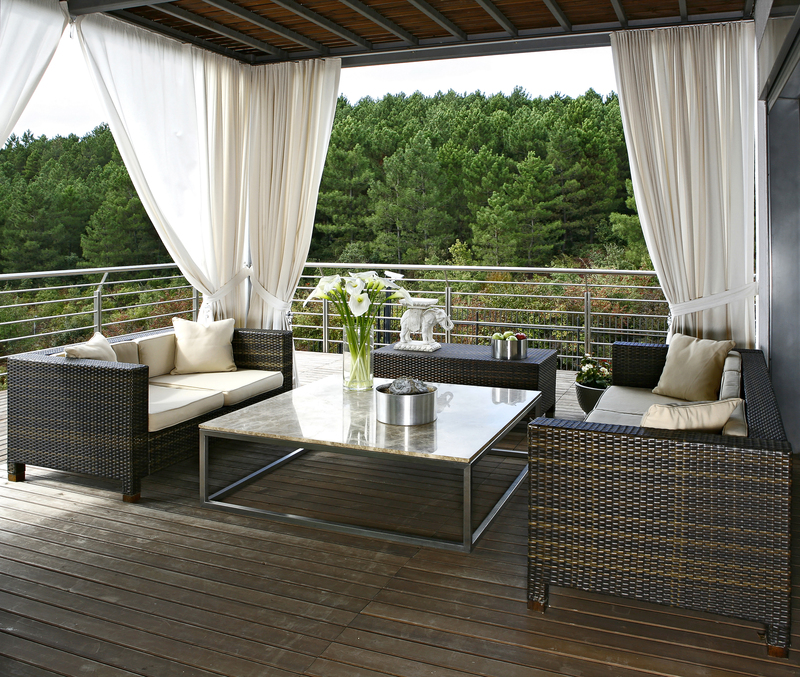Designing a Calm and Relaxing Zen Garden in Your Backyard
Posted on 23/09/2025
Designing a Calm and Relaxing Zen Garden in Your Backyard
Transforming your backyard into a serene retreat isn't just a dream--it's entirely achievable with a well-crafted Zen garden. These tranquil spaces, rooted in centuries-old Japanese tradition, provide a sanctuary where you can unwind, meditate, and reconnect with nature. In this comprehensive guide, you'll discover everything you need to know about designing a calm and relaxing Zen garden at home. Whether your space is vast or compact, you'll find practical steps, inspiring ideas, and essential tips to create your own peaceful oasis right in your backyard.
What is a Zen Garden?
A Zen garden--also known as a Japanese rock garden or karesansui--is a carefully composed landscape meant to evoke tranquility, balance, and mindfulness. Unlike traditional gardens, Zen gardens often feature minimalistic elements like sand, gravel, rocks, moss, and sparse plants. The design is driven by symbolism, simplicity, and the pursuit of harmony with nature.

Benefits of a Tranquil Zen Garden
- Mental Relaxation: Zen gardens promote meditation and mindfulness, reducing stress and anxiety.
- Aesthetic Appeal: With their minimalistic beauty, these gardens enhance your backyard's visual appeal.
- Low Maintenance: Zen-inspired landscapes often require less upkeep compared to traditional gardens.
- Personal Sanctuary: They create a calming retreat perfect for reflection and relaxation.
- Environmental Connection: By focusing on natural elements, you foster a deeper relationship with the outdoors.
Planning Your Zen Garden: Essential Considerations
Before diving into the design process, take time to plan your Zen garden thoughtfully. Here's what to consider:
1. Location and Space
Identify the most suitable spot in your backyard. Ideal locations are quiet, away from heavy traffic or loud noises, maximizing the garden's calming effect. You don't need a large area; even a small nook can become your personal Zen paradise.
2. Purpose & Style
Decide how you'll use your Zen garden. Will it be for meditation, yoga, or simply as a beautiful view from the house? Your intentions will shape the garden's size, layout, and features. Choose a style--traditional Japanese, modern minimalist, or an eclectic hybrid--that fits your taste and complements your home.
3. Budget and Resources
Establishing a budget helps narrow down materials and design choices. Homemade and DIY Zen gardens can be cost-effective, while custom landscapes created by professionals offer meticulously crafted appeal.
Key Elements of a Backyard Zen Garden
To achieve an authentic and calming Zen garden design in your backyard, integrate these essential elements:
1. Gravel or Sand (Symbolizing Water)
Fine, pale gravel or sand forms the backbone of a Zen garden. Carefully raked into rippling patterns, it symbolizes water's flow. Invest in quality materials for best results, and consider using a wooden rake to create soothing lines.
2. Rocks and Stones (Symbolizing Mountains or Islands)
Strategically placed rocks add visual interest and a sense of permanence. Varying heights, shapes, and colors evoke natural landscapes. Group stones in odd numbers for traditional Japanese harmony.
3. Greenery and Moss
Although Zen gardens are minimal, touches of greenery--like ferns, moss, or bamboo--bring life and texture. Choose drought-resistant plants for low maintenance.
4. Water Features
A small pond, fountain, or stone basin enhances tranquility. The gentle sound of trickling water encourages relaxation and blocks out noise pollution.
5. Bridges, Paths, and Stepping Stones
Create winding paths with flat stones or gravel, leading visitors through the garden. These elements invite slow exploration and contemplation.
6. Ornaments and Accessories
Carefully selected ornaments--such as stone lanterns, Buddha statues, or bamboo fences--add character and depth. Keep decorative elements subtle to preserve the garden's minimalist ethos.
Step-by-Step Guide: Designing Your Calm Zen Garden
Ready to design a calming Zen retreat in your backyard? Follow these detailed steps for a rewarding DIY experience:
1. Mark Out Your Garden
- Define the garden's boundaries using stakes or string.
- Clear the area of grass, weeds, and debris.
- Level the ground and plan gentle contours for a natural feel.
2. Lay the Foundation
- Install landscape fabric to prevent weed growth.
- Top with a layer of compacted gravel or sand, ensuring even distribution.
- Consider building a low wooden or stone border to contain the garden.
3. Place Rocks and Stones
- Arrange large rocks off-center for an asymmetrical, organic look.
- Group smaller stones around feature rocks to mimic natural occurrences.
- Partially bury rocks for a weathered and aged effect.
4. Add Sand or Fine Gravel
- Fill the remaining space with sand or gravel up to several inches thick.
- Rake into flowing patterns representing water-experiment with straight, circular, or wavy lines.
- Refresh regularly to maintain crisp patterns.
5. Incorporate Plants
- Plant low-maintenance moss, ferns, or ornamental grass in shaded areas or between stones.
- Use bamboo clumps or dwarf trees as focal points.
- Ensure your chosen plants suit your local climate for year-round resilience.
6. Install Water Features (Optional)
- Consider a small, solar-powered fountain for eco-friendly relaxation.
- Place a stone basin (tsukubai) along paths for a traditional touch.
- Ensure water features are proportionate and don't overwhelm the garden's peaceful vibe.
7. Add Finishing Touches
- Position a subtle lantern, a bamboo fence, or a simple bench for seating.
- Introduce sound with wind chimes or a flowing water feature.
- Use minimal ornamentation to maintain authenticity and tranquility.
Pro Tips for a Truly Relaxing Zen Backyard
- Embrace Simplicity: Less is more. Avoid clutter and focus on essential elements.
- Blend with Nature: Let the garden harmonize with existing landscape features.
- Prioritize Comfort: Add cushions or ergonomic seating for extended meditation.
- Invite Wildlife: Consider birdbaths or pollinator-friendly plants for natural ambiance.
- Engage All Senses: Include fragrant herbs, textured stones, and soothing water sounds.
Modern Twists on Traditional Zen Gardens
Looking to personalize your tranquil backyard Zen garden? Modern interpretations blend classical techniques with contemporary flair. Here's how to put a unique spin on your oasis:
- Color Accents: Subtle hues from flowering groundcovers or decorative pebbles add vibrancy without overwhelming minimalism.
- Contemporary Artworks: Integrate abstract sculptures for a fusion of East and West design sensibilities.
- Lighting: Use low-voltage LED lights or lanterns to create soft, atmospheric evening glow.
- Textural Diversity: Mix materials--smooth pebbles, weathered wood, and rusted metal--for dynamic visual interest.
Maintenance Tips for Your Backyard Zen Retreat
Caring for your relaxing backyard Zen garden is remarkably straightforward, but routine attention is key to preserving its beauty:
Regular Tasks
- Rake sand or gravel to refresh patterns and remove debris.
- Trim and prune plants as needed for neatness and scale.
- Check for weeds, especially around rocks and borders.
- Clean water features to prevent algae and mosquitoes.
- Sweep or wash ornaments occasionally to keep them looking their best.
*Embrace maintenance as a mindful ritual in itself--it's a meditative practice that reinforces your connection to the garden's peaceful spirit.*
Common Mistakes to Avoid in Zen Garden Design
When designing a calm Zen garden in your backyard, it's important to avoid these typical errors:
- Overcrowding elements: Crowded gardens feel chaotic, not serene. Allow for plenty of negative space.
- Ignoring symbolism: Zen gardens are meaningful--consider the placement and symbolism of every item.
- Poor plant selection: Choose natives and drought-resistant species for sustainability.
- Disregarding scale: Keep features proportionate to your space for visual harmony.
- Neglecting regular care: Even low-maintenance gardens need occasional attention.
Inspiring Ideas for Small and Large Zen Gardens
Small Backyard Zen Garden Inspiration
- Use compact sandboxes or raised beds to define cozy Zen zones.
- Add vertical elements like bamboo screens or trellises for privacy and dimension.
- Incorporate mirrors to visually expand confined spaces.
- Choose a single striking rock or miniature fountain as the central focus.
Large Backyard Zen Garden Concepts
- Create meandering stone paths winding through distinct meditation areas.
- Build a dry creek bed with gravel and smooth river rocks for dynamic movement.
- Introduce a traditional Japanese tea pavilion or meditation gazebo.
- Accent with multiple zones--gravel for meditation, moss for shade, and bamboo groves for privacy.
Choosing the Right Plants for Your Zen Garden
While Zen gardens are known for their minimalism, choosing the right plants enhances both aesthetics and tranquility. Here are some excellent options:
- Bamboo: Symbolizes resilience and adds vertical structure.
- Moss: Offers a lush, green carpet that softens stone and wood.
- Japanese Maple: Provides dappled shade and striking color in fall.
- Ferns: Bring delicate texture to shaded areas.
- Hostas: Shade-loving perennials with bold foliage.
- Ornamental grasses: Evoke movement and softness.
Always consider your climate and sunlight availability before planting.

Zen Garden Design FAQ
Can I create a Zen garden in a small backyard?
Absolutely. Even the smallest outdoor space can be transformed into a tranquil Zen retreat with careful planning and minimal elements.
What is the best type of gravel for a Zen garden?
Opt for fine, light-colored gravel or washed sand. Popular choices include crushed granite, river pebbles, or white marble chips for maximum serenity.
Are Zen gardens low maintenance?
Generally, yes. Regular raking, occasional weeding, and seasonal plant care are usually all that's needed.
Can I add flowers to my Zen garden?
Traditional Zen gardens rarely feature flowers, but you can incorporate minimal blooms like camellias or irises for seasonal interest--just keep colors subtle and plantings sparse.
Conclusion: Bring Peace and Balance to Your Backyard with a Zen Garden
Designing a calm and relaxing Zen garden in your backyard is a rewarding journey that brings lasting tranquility into your everyday life. Whether you carve out a small meditation nook or transform your entire landscape, these serene gardens rejuvenate both mind and spirit. Embrace simplicity, honor tradition, and personalize your design to enjoy peace, harmony, and natural beauty right at home.
Start planning today--and discover the peaceful retreat your backyard truly deserves.
```
